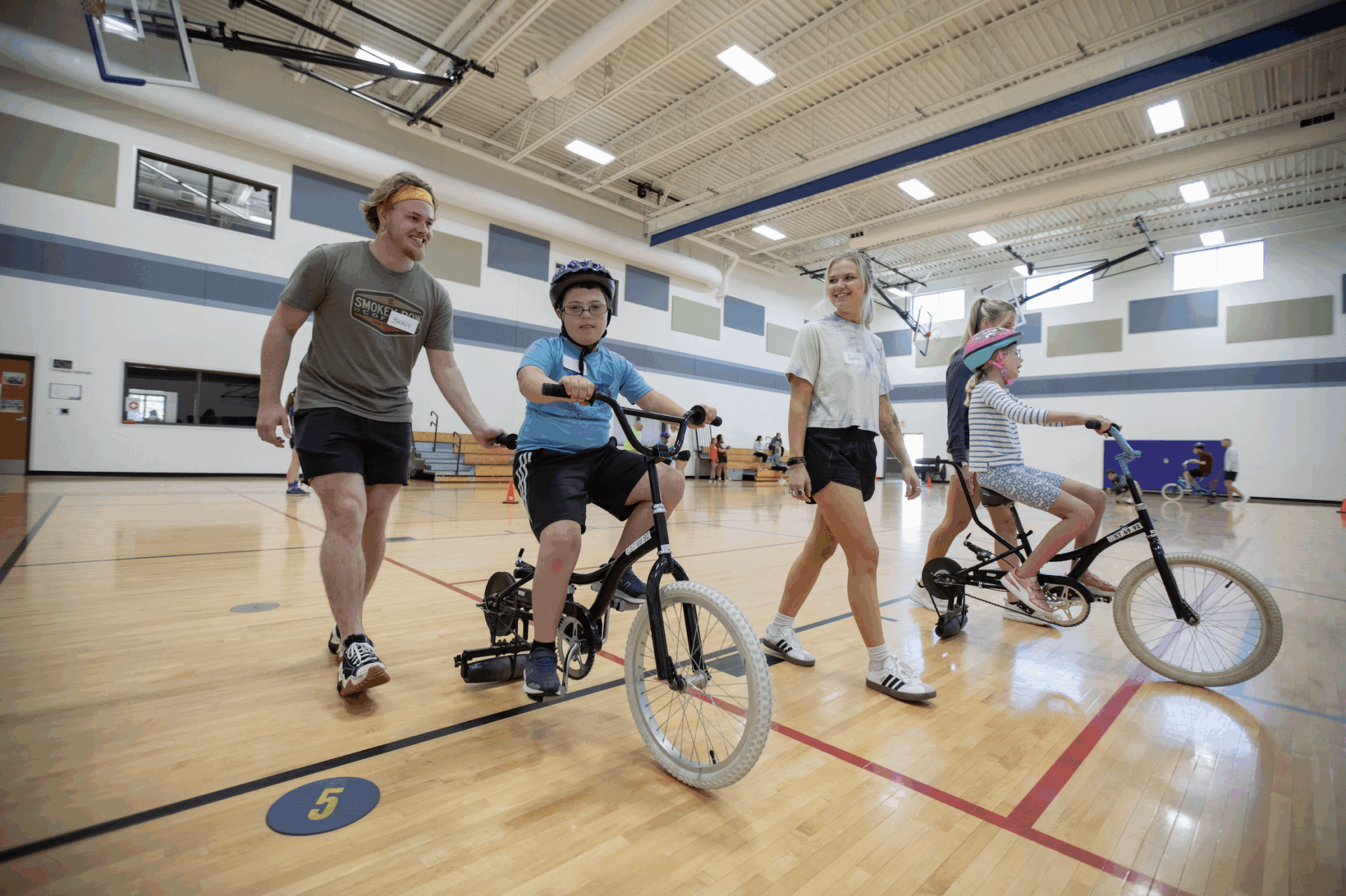School is where learning, creativity, and social interaction thrives. No matter the age of the student, a classroom should always feel like a comfortable place to learn and grow among peers.
Unfortunately, that is not the case for everyone. Without proper resources, students with disabilities are often at a disadvantage in the classroom. Whether feeling overwhelmed, overstimulated, or just completely lost, students’ needs are not always accommodated, making it difficult for them to coexist with their classmates.
Teachers have the important, and oftentimes challenging, job of managing a classroom full of students. Most school activities and lesson plans are not catered to everyone’s individual needs, making it challenging for students with disabilities to feel included. Teachers may not always be equipped with the tools or knowledge to appropriately interact with their students with disabilities—especially when a problem arises.
Every student with a disability has different hurdles they must overcome on a daily basis. It’s important to remember that the following solutions may not apply to every individual, but are simply suggestions to get started on managing potential issues that may occur in the classroom.
5 Challenges and Solutions for Teaching Students with Disabilities
- Challenge: A student with a disability may find it difficult to sit still or focus during a lesson. Classroom decorations, classmates, and other stimuli may be distracting for a student with a disability, making it nearly impossible to pay attention to the teacher.
Solution: Teachers should try to maintain a clean classroom. Keeping it neat and organized can help alleviate distractions. Teachers can even implement fun organizational systems for students to participate in! - Challenge: Certain disabilities can make social situations confusing or difficult to navigate. The possible negative attitudes or stereotypes that peers may hold towards individuals with disabilities adds to this complex issue. Students with disabilities tend to struggle with making or maintaining friendships.
Solution: Embrace the beauty of peer mentoring. When possible, teachers should partner students with disabilities with students who do not have disabilities. This allows students to socialize with new peers and learn from one anothers’ unique strengths and knowledge. Opening the doors to peer mentoring can help all students develop social skills, independence, and problem solving. It’s the best method for students to inspire one another and spark unexpected friendships! - Challenge: Students with disabilities such as ADHD or dyslexia may read or write slower than their peers. Falling behind often leads to a student feeling frustrated or discouraged.
Solution: Every student learns differently. Teachers need to remain flexible to account for all students’ learning methods. Embrace the uniqueness of each student by exploring various teaching styles! - Challenge: When a classroom is inaccessible to students with special needs, it hinders their ability to learn alongside their classmates. Whether it be physical barriers or a lack of resources, many classrooms do not provide the proper accommodations for all students.
Solution: Advocate for students with disabilities. Whether you’re a parent, a teacher, or another staff member, it’s important to be vocal about supporting students with disabilities, whether that be assistive technology for nonverbal learners, accessible doors for students in wheelchairs, or teacher helpers who specialize in special education. Speak up if you notice a lack of resources in the classroom. After all, a teacher is only one person. Elevate their voices and advocate for more accommodating classrooms! - Challenge: Some teachers are not aware of the extent of their students’ disabilities. This circumstance creates learning issues for both the teacher and the student.
Solution: Every student with a disability should have clear accommodations, modifications, and IEP that are specifically designed for them. Teachers should be educated on all of their students’ disabilities and how to appropriately teach them. Other than relying on a blanket approach to help students with disabilities, accommodations should be assessed on an individual basis. Every student is different and deals with their own unique struggles, so the adults in the classroom should be prepared to cater to their needs.
Accommodation for all students in the classroom is paramount. Every child deserves equal educational opportunities, no matter their physical or intellectual ability. For additional information and advice for teachers, read our blog about How to Support Students with Disabilities in the Classroom.
Covey: A Culture of Caring
Covey, a non-profit organization for adults with intellectual and developmental disabilities, understands the importance of advocacy and accommodations for students in the classroom. Luckily, there are many K-12 programs and resources that allow students with disabilities to feel welcome and comfortable at school. But when it comes time for high school graduation, many family members tend to worry about how their loved one will continue to learn, grow, and interact with peers—outside of the classroom.
Covey’s highly knowledgeable staff members are committed to customized care that is catered to the well-being and individual goals of each adult participant. Through our various programs, events, and outings, Covey is a place for adults with disabilities to explore new interests, interact with the community, and build a social circle. We know how important your loved one is to you, and we are here to help them reach their highest potential, beyond high school graduation.
For more information on Covey’s various programs and locations, visit our website.

